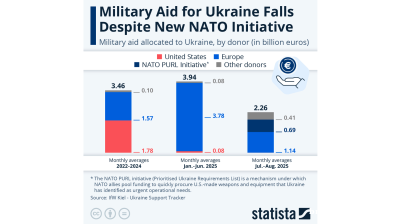The headline seasonally adjusted IHS Markit Russia Manufacturing PMI for December was up at 49.7 in December from 46.3 in November and almost back to the 50 no-change mark as Russia’s half-hearted economic recovery continues.
The December result signalled the slowest deterioration in operating conditions across the Russian manufacturing sector in the current four-month sequence of decline, reports Markit.
“The overall contraction was only fractional overall, but the higher headline reading partially stemmed from supplier hold-ups,” Markit said in a press release. “December PMI data signalled a further, albeit only fractional, decline in the health of the Russian manufacturing sector. As well as slower contractions in production and new orders, the headline figure was pushed higher by substantial supply chain disruption. The deterioration in vendor performance led to an accelerated and robust rate of input price inflation.”
Russia has come through 2020 in much better shape than anyone expected. Rosstat released its first estimate of GDP by production, revising its 3Q20 contraction from 3.6% year on year as per preliminary estimates to 3.4% y/y (vs. a contraction of 8% y/y in 2Q20) on December 14. Likewise, the budget deficit is expected to end the year at 3.9% of GDP, a lot less than the circa 6% predicted in the first half of the year.
The disappointments were on inflation, which is likely to end the year at circa 4.7% (CPI was 4.4% in November, above the Central Bank of Russia (CBR) 4% target), and unemployment, which jumped to 6.3% during the lockdowns in the summer.
Amidst the difficult operating conditions caused by the double whammy of the coronacrisis and the oil price shock industrial production has also spluttered, contracting for most of 2020 by circa 5% but recovering somewhat in November to contract by 2.6% y/y in November.
The mild recovery continued in December with the rate of job shedding slowing, according to Markit, as output expectations strengthened amid hopes of greater client demand over the coming year. With half a dozen vaccines being rolled out in the first quarter there is a chance for a snapback in 2021 as a year’s worth of pent-up demand is released.
Output continued to decline across the Russian goods-producing sector in December, as subdued client demand weighed further on production. That said, the pace of the downturn softened and was the slowest in the current three-month sequence of contraction.
New business also fell further in the final month of 2020, albeit at a notably softer pace, reports Markit.
“The rate of decline was only fractional overall, but panellists also suggested that strong competition hampered efforts to attract new clients. Domestic demand reportedly dragged on new sales as new export orders rose for the third month running. Although the pace of expansion in export order book volumes slowed, it was nonetheless above the series average,” Markit said.
Inflationary forces have reappeared in the last months of 2020 and have continued to push prices up in December: the rate of input price inflation was the quickest for almost six years. Higher cost burdens were often attributed to supplier shortages and unfavourable exchange rate movements, according to Markit.
Firms reacted to the significant rise in costs by partially passing these on to clients through greater selling prices. The increase in charges was the sharpest since March 2015.
Supply chain disruptions intensified in December, as vendor shortages were met with transportation delays. Lead times lengthened to their greatest extent since May.
Despite the difficult operating conditions, business owners remain optimistic for 2021 and output expectations strengthened in December amid hopes of the release of pent-up demand as 2021. The degree of confidence was at its highest since August and was relatively strong.
Data

Military aid for Ukraine falls despite new Nato PURL initiative – Statista
The Kiel Institute for the World Economy found that military aid to Ukraine dropped sharply in July and August compared to previous months, despite the implementation of the Nato PURL initiative.

IMF cuts Russia’s 2025 growth forecast to 0.6%, leaves Ukraine's unchanged at 2%
The International Monetary Fund has lowered its forecast for Russia’s economic growth in 2025 to just 0.6%, marking the second-steepest downgrade among major economies, even as it raised its global outlook.

Russia's PMI indices plummet as economy cools
Russia’s private sector entered deeper contraction in September, as both services and manufacturing activity declined, according to the latest PMI data published by S&P Global.

Japan’s current account surplus dips as overseas earnings weaken
The surplus nevertheless remained in positive territory for the seventh consecutive month and was the second-highest on record for August.



